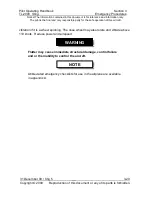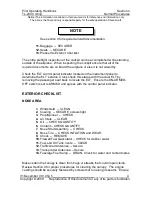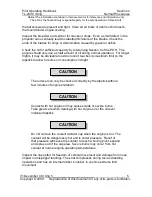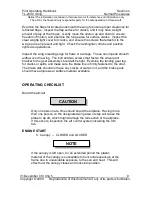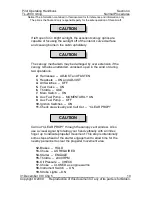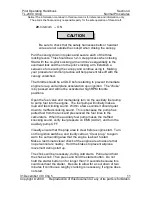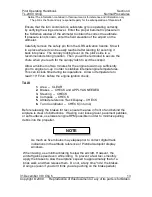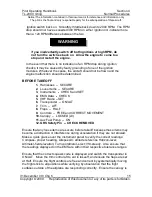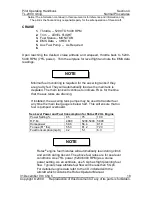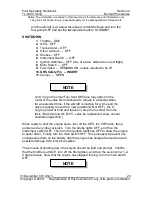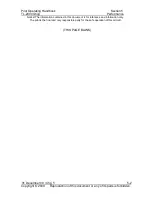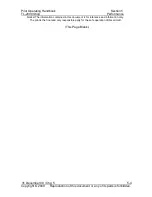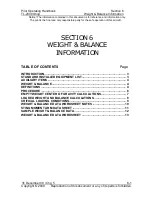
Pilot Operating Handbook
Section 4
TL-2000
Sting
Normal Procedures
Notice! The information contained in this document is for reference and information only.
The pilot is the final and only responsible party for the safe operation of this aircraft.
31 December 09 / Chg 5_____________________________________________14
Copyright © 2009 Reproduction of this document or any of its parts is forbidden.
will cause the brake pads to glaze and the brake caliper to chatter with
each brake application.
Be sure to maintain hand control of the flight stick while taxiing. This will
prevent the elevator from jolting up and down when taxiing over bumps or
dips. Ensure the compass heading is swinging and in the proper
direction. When in taxi turns, observe the turn coordinator. The display
should indicate the direction of the turn and the ball should be free to
move in the race.
ENGINE RUN-UP
1.
Brakes -- HOLD
2.
Oil Temperature -- 110°F min.
3.
Oil Pressure -- 29 – 73 PSI
4.
Cylinder Head Temperature -- 110º F min.
5.
Throttle -- 4000 RPM
6.
Ignition Switches -- 300 RPM DROP (max), 120 RPM DIFF (max)
7.
Throttle -- 2000 RPM
8.
Fuel Pressure -- CHECK
9. GRS Safety Pin –
Check Removed
Hold the brakes before beginning the engine run-up. Ensure that both the oil
temperature, oil pressure, and cylinder head temperatures are within their
respective tolerances. The following process should be accomplished quickly
yet fluidly to avoid overheating the engine or possibly pulling debris into the
propeller.
The brakes may not hold the aircraft during high power settings.
Therefore, do not taxi up close to the restricted runway hold line
prior to ignition check. Remain clear of the runway environment
during the time that attention is diverted into the cockpit for engine
observations.
Smoothly apply adequate throttle to stabilize at 4000 RPM. Turn off the first
ignition switch and note the RPM on the EMS. Turn the first ignition back on
and allow the RPM to return to the higher setting. Immediately turn off the
second ignition switch and note the RPM on the EMS. Then turn the second
NOTE

